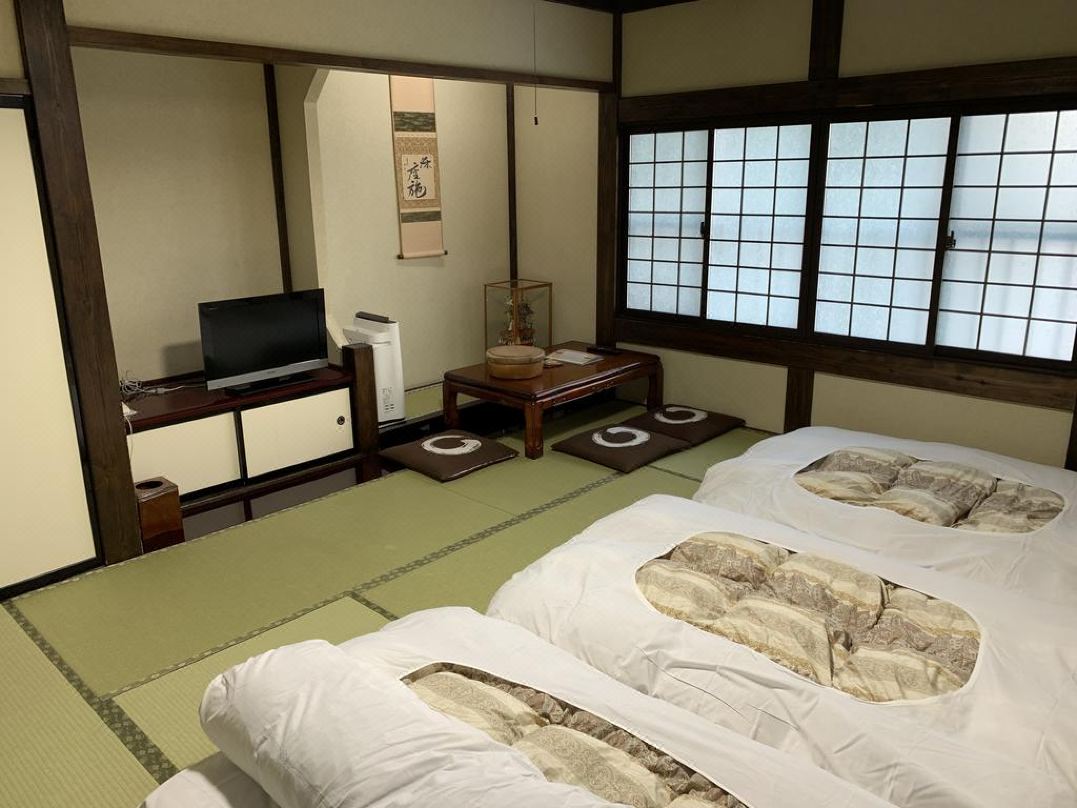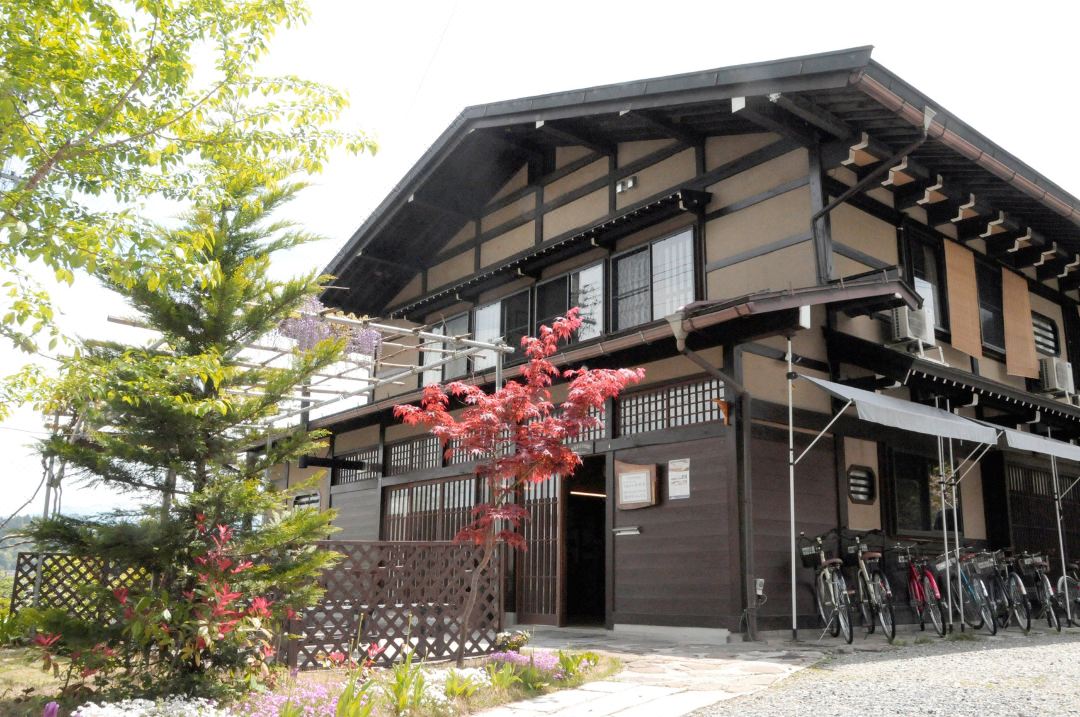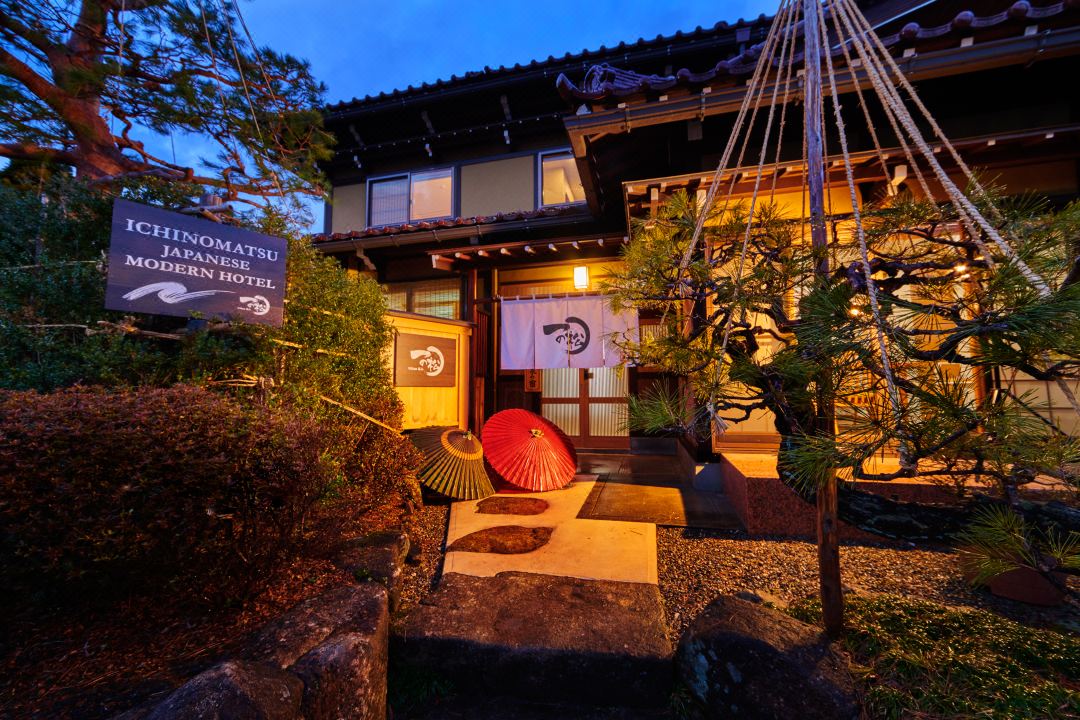[Held on October 9th and 10th] The highlight is the gorgeous floats! Learn more about the traditional autumn Takayama Festival
![[Held on October 9th and 10th] The highlight is the gorgeous floats! Learn more about the traditional autumn Takayama Festival](https://resources.matcha-jp.com/resize/720x2000/2024/09/10-196581.webp)
Located in the northern part of Gifu Prefecture, the center of Japan, Hida Takayama is a popular tourist destination with many attractions. The scenery, where rich nature and traditions blend in harmony, fascinates everyone who visits. The spring and autumn Takayama Festivals are particularly famous. This famous festival, which is also registered as a UNESCO World Heritage Site, attracts a huge crowd every year during the festival period. The Autumn Takayama Festival is the annual festival of Sa...
-
Table of Contents
- A lineup of 11 gorgeous floats
- Karakuri dolls with their intricate movements
- A variety of gorgeous decorations adorning the floats
- A long festival procession involving several hundred people
- Cockfighting music with the sound of bells ringing out
- A brave lion dance
- Yoimatsuri: The floats lit with lanterns create a fantastic atmosphere
- Where the Autumn Takayama Festival is held
- Autumn Takayama Festival - A permanent exhibition of festival floats
- Festival event schedule (planned)
- Access to Hida Takayama
- If you want to know more about Hida Takayama
A lineup of 11 gorgeous floats
![[Held on October 9th and 10th] The highlight is the gorgeous floats! Learn more about the traditional autumn Takayama Festival](https://resources.matcha-jp.com/resize/720x2000/2024/09/10-196605.webp)
![[Held on October 9th and 10th] The highlight is the gorgeous floats! Learn more about the traditional autumn Takayama Festival](https://resources.matcha-jp.com/resize/720x2000/2024/09/10-196614.webp)
![[Held on October 9th and 10th] The highlight is the gorgeous floats! Learn more about the traditional autumn Takayama Festival](https://resources.matcha-jp.com/resize/720x2000/2024/09/12-196910.webp)
Takayama Festival has a long history, said to have originated in the late 16th to 17th century. Takayama Festival is a collective name for two festivals: the spring Sanno Festival and the autumn Hachiman Festival. Each festival enshrines a different deity, and the spring festival is held at Hie Shrine, and the autumn festival is held at Sakurayama Hachiman Shrine.
Of these, the Autumn Takayama Festival takes place every year on October 9th and 10th. The festival is said to have originated during the time of the Kanamori clan, who ruled Hida (1585-1692). One of the highlights of the festival is the large floats called yatai. The yatai are said to have first appeared around 1718. Twelve floats are pulled together for the Sanno Festival and eleven for the Hachiman Festival, creating a spectacular sight that overwhelms all who see it. Although some floats have been lost due to fires or abandonment, the festivals have continued thanks to the tireless support of the people of the town, known as the yatai group.
In 1960, the 23 remaining Takayama Festival floats were designated as Important Tangible Folk Cultural Properties of Japan, and in 1979, the Takayama Festival float event was designated as Important Intangible Folk Cultural Properties of Japan. Furthermore, in 2016, the Takayama Festival float event, along with 32 other festivals across the country, was registered as a UNESCO Intangible Cultural Heritage as "Yama, Hoko, and Float Events," and the Takayama Festival was recognized as a global treasure.
Karakuri dolls with their intricate movements
![[Held on October 9th and 10th] The highlight is the gorgeous floats! Learn more about the traditional autumn Takayama Festival](https://resources.matcha-jp.com/resize/720x2000/2024/09/12-196925.webp)
![[Held on October 9th and 10th] The highlight is the gorgeous floats! Learn more about the traditional autumn Takayama Festival](https://resources.matcha-jp.com/resize/720x2000/2024/09/12-196914.webp)
![[Held on October 9th and 10th] The highlight is the gorgeous floats! Learn more about the traditional autumn Takayama Festival](https://resources.matcha-jp.com/resize/720x2000/2024/09/12-196916.webp)
On the 9th and 10th, twice a day, a Karakuri performance will be held on the Hotei-dai within the grounds of Sakurayama Hachimangu Shrine. To the tune of "Rokudan Kuzushi," two Chinese children, one male and one female, take turns spinning around on five swings, and when they land on the shoulders and hands of the monk Hotei, a banner with the words "Wako Dojin" (Peace and Unity) appears from the fan in Hotei's left hand. It is an extremely intricate and sophisticated performance, with 36 strings manipulated by eight people, and the Karakuri puppets' vivid movements are captivating, as if they are alive.
The Karakuri dolls on the floats at the Takayama Festival date back to the Bunka and Bunsei eras (1804-1830). Around this time, Karakuri dolls were introduced, and by the Edo period, Karakuri dolls were being performed on most of the floats. Currently, there are only four, including the spring and autumn festivals.
The Karakuri puppets used in the Takayama Festival are sophisticated and based on themes such as themes from Noh plays. Their internal mechanisms are extremely ingenious and complex, making them extremely difficult to operate. They require many years of training, experience, and intuition, and in some cases children can begin practicing as early as elementary school. They are operated by Ayakata, who are selected from within the group. Ayakata, of which only a few people can serve as members of a group, are the stars of the float group, so to speak.
A variety of gorgeous decorations adorning the floats
![[Held on October 9th and 10th] The highlight is the gorgeous floats! Learn more about the traditional autumn Takayama Festival](https://resources.matcha-jp.com/resize/720x2000/2024/09/12-196894.webp)
![[Held on October 9th and 10th] The highlight is the gorgeous floats! Learn more about the traditional autumn Takayama Festival](https://resources.matcha-jp.com/resize/720x2000/2024/09/12-196896.webp)
![[Held on October 9th and 10th] The highlight is the gorgeous floats! Learn more about the traditional autumn Takayama Festival](https://resources.matcha-jp.com/resize/720x2000/2024/09/12-196897.webp)
![[Held on October 9th and 10th] The highlight is the gorgeous floats! Learn more about the traditional autumn Takayama Festival](https://resources.matcha-jp.com/resize/720x2000/2024/09/12-196895.webp)
The elaborate carvings seen on the floats today were not installed during the Bunka and Bunsei eras. Inspired by the carvings of Tachikawa Washiro, a master craftsman from Suwa, Shinshu, installed on the float "Gotaisan" for the Sanno Festival in 1837, carvings by master craftsmen from Takayama, such as Taniguchi Yoroku, began to be installed thereafter. Hida craftsmen competed with each other in their skills, fully demonstrating their masterful spirit and decorating their respective floats.
In addition to these, the numerous decorations that adorn the floats, such as lacquer painting and decorative work, are still passed down as traditional techniques of the Hida people and are of great use in maintaining and repairing the floats.
A long festival procession involving several hundred people
![[Held on October 9th and 10th] The highlight is the gorgeous floats! Learn more about the traditional autumn Takayama Festival](https://resources.matcha-jp.com/resize/720x2000/2024/09/10-196637.webp)
![[Held on October 9th and 10th] The highlight is the gorgeous floats! Learn more about the traditional autumn Takayama Festival](https://resources.matcha-jp.com/resize/720x2000/2024/09/10-196635.webp)
![[Held on October 9th and 10th] The highlight is the gorgeous floats! Learn more about the traditional autumn Takayama Festival](https://resources.matcha-jp.com/resize/720x2000/2024/09/10-196646.webp)
![[Held on October 9th and 10th] The highlight is the gorgeous floats! Learn more about the traditional autumn Takayama Festival](https://resources.matcha-jp.com/resize/720x2000/2024/09/10-196654.webp)
![[Held on October 9th and 10th] The highlight is the gorgeous floats! Learn more about the traditional autumn Takayama Festival](https://resources.matcha-jp.com/resize/720x2000/2024/09/10-196653.webp)
The festival procession is a two-day, one-night journey in which the gods pray for the prosperity of the shrine parishioners. It is traditionally called Goshinko. A large procession of several hundred people goes around the parishioners' area, rests at the shrine, and returns to the shrine the next day.
The procession is very spectacular, with the mikoshi (portable shrine) at the center, lion dancers, cockfighting musicians, gagaku musicians, and guards wearing kamishimo (traditional Japanese formal attire) parading through each neighborhood like a picture scroll from the era. In addition, instead of floats, a float called a taimeiki, which has the flags of the floats hoisted on it, also joins the procession.
![[Held on October 9th and 10th] The highlight is the gorgeous floats! Learn more about the traditional autumn Takayama Festival](https://resources.matcha-jp.com/resize/720x2000/2024/09/10-196631.webp)
The parishioners wait at the front door of their houses for the procession to come around, welcoming the god of the mikoshi. At this time, it is strictly forbidden to look down on the procession from a high place. Furthermore, on festival days, blinds or crested curtains are often hung in front of each house in the parishioner area, as a tradition to not show unclean things inside the house when the god passes by.
![[Held on October 9th and 10th] The highlight is the gorgeous floats! Learn more about the traditional autumn Takayama Festival](https://resources.matcha-jp.com/resize/720x2000/2024/09/10-196648.webp)
![[Held on October 9th and 10th] The highlight is the gorgeous floats! Learn more about the traditional autumn Takayama Festival](https://resources.matcha-jp.com/resize/720x2000/2024/09/10-196643.webp)
In the festival procession, people who wear kamishimo (traditional Japanese formal attire) with their family crests and a single-character hat serve as guards. People wearing kamishimo are depicted in the Takayama Festival Scroll from the Bunka era, and this traditional culture has been passed down for a long time since the Edo period. As this is the only time of year that the people wear kamishimo, a dressing seminar is held every year by the city to ensure that they do not forget the proper technique for dressing in the kimono.
Cockfighting music with the sound of bells ringing out
![[Held on October 9th and 10th] The highlight is the gorgeous floats! Learn more about the traditional autumn Takayama Festival](https://resources.matcha-jp.com/resize/720x2000/2024/09/10-196655.webp)
![[Held on October 9th and 10th] The highlight is the gorgeous floats! Learn more about the traditional autumn Takayama Festival](https://resources.matcha-jp.com/resize/720x2000/2024/09/10-196656.webp)
![[Held on October 9th and 10th] The highlight is the gorgeous floats! Learn more about the traditional autumn Takayama Festival](https://resources.matcha-jp.com/resize/720x2000/2024/09/10-196657.webp)
Toukeiraku is also called Torigeuchi. Local people call it "Kankakokan" because of the sound it produces. They wear Hida-dyed costumes with dragons and phoenixes dyed on them and a single-character hat, and march while beating gongs and shime-daiko drums. As the festival approaches, local children practice diligently every night, getting excited for this once-a-year event.
A brave lion dance
![[Held on October 9th and 10th] The highlight is the gorgeous floats! Learn more about the traditional autumn Takayama Festival](https://resources.matcha-jp.com/resize/720x2000/2024/09/10-196659.webp)
![[Held on October 9th and 10th] The highlight is the gorgeous floats! Learn more about the traditional autumn Takayama Festival](https://resources.matcha-jp.com/resize/720x2000/2024/09/10-196627.webp)
![[Held on October 9th and 10th] The highlight is the gorgeous floats! Learn more about the traditional autumn Takayama Festival](https://resources.matcha-jp.com/resize/720x2000/2023/12/07-155395.webp)
The lion dance leads the festival procession. The lion has the role of driving away evil spirits and exorcising the festival grounds. Also called Tokubei-jishi, this is the most traditional of the many lion dances handed down in Hida. The lion dancers perform a brave dance wearing a deep green and vermilion yutan with a pattern of lion head fur.
Yoimatsuri: The floats lit with lanterns create a fantastic atmosphere
![[Held on October 9th and 10th] The highlight is the gorgeous floats! Learn more about the traditional autumn Takayama Festival](https://resources.matcha-jp.com/resize/720x2000/2023/12/07-155397.webp)
![[Held on October 9th and 10th] The highlight is the gorgeous floats! Learn more about the traditional autumn Takayama Festival](https://resources.matcha-jp.com/resize/720x2000/2024/09/10-196662.webp)
![[Held on October 9th and 10th] The highlight is the gorgeous floats! Learn more about the traditional autumn Takayama Festival](https://resources.matcha-jp.com/resize/720x2000/2024/09/10-196664.webp)
Another highlight not to be missed is the Yoi Matsuri, which begins in the evening of the 9th. On the evening of the 9th, the floats are returned from the main approach to Sakurayama Hachimangu Shrine to their respective storehouses, where they are decorated with about 100 lanterns in preparation for the Yoi Matsuri. At 6pm, a total of 11 floats, led by the Kaguradai, begin to parade through the night streets. The sight of them lit up by the lanterns evokes a mysterious beauty, offering a different charm to their daytime appearance. When the floats reach Jundoba, they return to their respective storehouses to the tune of the farewell song "Takai Yama," and the first day of the festival comes to a melancholy end.
Where the Autumn Takayama Festival is held
Hotels near Sakurayama Hachiman Shrine
Autumn Takayama Festival - A permanent exhibition of festival floats
Hotels near TAKAYAMA MATSURI YATAI KAIKAN -The Takayama Festival Floats Exhib...
Festival event schedule (planned)
Date: Wednesday, October 9th - Thursday, October 10th, 2024
Float parade: October 9th 9:00-17:00, October 10th 9:00-16:00
Karakuri dedication: October 9th, 12:00-, 14:00-, 20 minutes each, October 10th, 11:00-, 13:00-, 20 minutes each
Evening Festival: October 9th 18:15-20:30
*In the event of rain, some festival events will be canceled. There will be no postponement of the dates.
Access to Hida Takayama
If you want to know more about Hida Takayama
Surrounded by the magnificent nature represented by the Hida Mountains (Northern Alps), Hida Takayama is a town that is alive with history and traditional culture, such as old townscapes that retain traces of the Edo period and Takayama festivals held in spring and autumn. There are also hot springs such as Hida Takayama Onsen and Okuhida Onsenkyo, as well as gourmet food such as Hida beef and Japanese sake. In particular, the Takayama Festival, which is held in spring and autumn, is characterized by a festival procession centered around gorgeous floats (dashi floats), elaborately moving mechanical dolls, and reproductions of picture scrolls, and many people from Japan and abroad come to watch. I will visit. It is about 6 hours from Tokyo and about 4 hours from Osaka. There are some of Japan's leading tourist destinations such as Shirakawa-go, Kamikochi, and Kanazawa in the surrounding area, and you can visit various places around Hida Takayama. There is a mix of various types of accommodations, including Western-style hotels, traditional inns, homely guesthouses, and hostels suitable for long-term stays, and we have the capacity to meet the needs of our users. The people of Hida, who are involved in various fields such as nature, history, tradition, culture, and gastronomy, are simple and warm, and offer heartfelt hospitality to visitors.
The contents on this page may partially contain automatic translation.










































![[Wakayama Guide] Ume and Umeshu (Plum and Plum Wine)](https://resources.matcha-jp.com/resize/720x2000/2025/12/08-252248.webp)
![[2025 Update] From Kansai Airport to Namba - Recommended for travelers with large luggage! Travel comfortably by bus](https://resources.matcha-jp.com/resize/720x2000/2025/10/25-248088.webp)